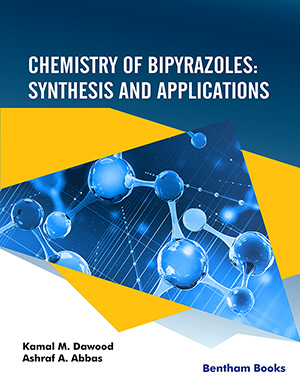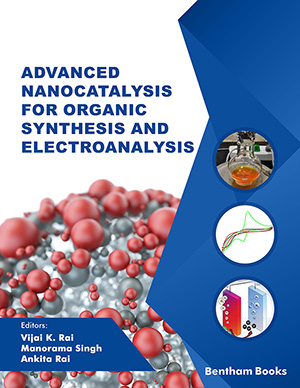
Abstract
In light of rapid progress in biochemistry and modern bioengineering, there is a great interest in understanding how modifying the structure of naturally occurring lipids can be used to improve their nutritional and health properties. Structured lipids (SLs) or custom-made lipids can supply functional fatty acids because of their specific positioning in the glycerol structure. Health benefits of n–3 fatty acids such as docosahexaenoic acid (DHA) have been widely reported. Little information is available on the potential for health benefits of the SLs molecules that are rich in DHA and have well defined structure. This review attempts to summarize our present state of knowledge of various approaches to produce structured DHA–containing triglycerides and phospholipids as well as their applications.
Current Organic Chemistry
Title:Synthesis and Biological Interest of Structured Docosahexaenoic Acid–Containing Triacylglycerols and Phospholipids
Volume: 17 Issue: 8
Author(s): Madeleine Picq, Nathalie Bernoud-Hubac and Michel Lagarde
Affiliation:
Keywords: Chemistry, DHA, lipids, fat, lipase, nutrition.
Abstract: In light of rapid progress in biochemistry and modern bioengineering, there is a great interest in understanding how modifying the structure of naturally occurring lipids can be used to improve their nutritional and health properties. Structured lipids (SLs) or custom-made lipids can supply functional fatty acids because of their specific positioning in the glycerol structure. Health benefits of n–3 fatty acids such as docosahexaenoic acid (DHA) have been widely reported. Little information is available on the potential for health benefits of the SLs molecules that are rich in DHA and have well defined structure. This review attempts to summarize our present state of knowledge of various approaches to produce structured DHA–containing triglycerides and phospholipids as well as their applications.
Export Options
About this article
Cite this article as:
Picq Madeleine, Bernoud-Hubac Nathalie and Lagarde Michel, Synthesis and Biological Interest of Structured Docosahexaenoic Acid–Containing Triacylglycerols and Phospholipids, Current Organic Chemistry 2013; 17 (8) . https://dx.doi.org/10.2174/1385272811317080009
| DOI https://dx.doi.org/10.2174/1385272811317080009 |
Print ISSN 1385-2728 |
| Publisher Name Bentham Science Publisher |
Online ISSN 1875-5348 |
Call for Papers in Thematic Issues
Catalytic C-H bond activation as a tool for functionalization of heterocycles
The major topic is the functionalization of heterocycles through catalyzed C-H bond activation. The strategies based on C-H activation not only provide straightforward formation of C-C or C-X bonds but, more importantly, allow for the avoidance of pre-functionalization of one or two of the cross-coupling partners. The beneficial impact of ...read more
Electrochemical C-X bond formation
Conventional methods for carrying out carbon–X bond formation are typically conducted at harsh reaction conditions, and rely on expensive catalysts as well as the use of stoichiometric, and perhaps toxic, oxidants. In this regard, electrochemical synthesis has recently been recognized as a sustainable and scalable strategy for the construction of ...read more
From Lab Bench to Algorithm: The Future of Organic Chemistry Powered by AI
Organic chemistry, with its intricate dance of molecules and reactions, is undergoing a transformation fuelled by the power of Artificial Intelligence (AI) and Machine Learning (ML). The integration of AI/ML with Organic Chemistry is revolutionizing the field by enhancing the efficiency and accuracy of chemical research and development. These technologies ...read more
N-Heterocyclics: Synthesis, Computational Studies, and Coordination Chemistry - A synthetic perspective
N-heterocycles, such as phenanthroline, quinoline, or their organometallic complexes, are widely used in a variety of fields, including chemistry, biochemistry, and coordination chemistry. They play a key role in many chemical and biological processes as biological ligands, medicinal agents, catalysts in organic synthesis, molecular probes and sensors, as well as ...read more
Related Journals
 27
27
- Author Guidelines
- Graphical Abstracts
- Fabricating and Stating False Information
- Research Misconduct
- Post Publication Discussions and Corrections
- Publishing Ethics and Rectitude
- Increase Visibility of Your Article
- Archiving Policies
- Peer Review Workflow
- Order Your Article Before Print
- Promote Your Article
- Manuscript Transfer Facility
- Editorial Policies
- Allegations from Whistleblowers
- Announcements
Related Articles
-
Foreword: The Year in Review: Comments on Plants, Cyclodextrins, Microbiota, and Diabetes
Current Pharmaceutical Design Fatty Acids - Induced Lipotoxicity and Inflammation
Current Drug Metabolism Beneficial Effects of the Mediterranean Diet on Metabolic Syndrome
Current Pharmaceutical Design Prebiotic Carbohydrates for Therapeutics
Endocrine, Metabolic & Immune Disorders - Drug Targets Disorders of Respiration and Sleep-Disordered Breathing in Patients with Chronic Renal Failure
Current Respiratory Medicine Reviews Nanomedicine for Gene Delivery for the Treatment of Cardiovascular Diseases
Current Gene Therapy Experimental Rodent Models of Vascular Dementia: A Systematic Review
CNS & Neurological Disorders - Drug Targets Nutraceuticals, A New Challenge for Medicinal Chemistry
Current Medicinal Chemistry Use of Human Umbilical Cord Blood (HUCB) Cells to Repair the Damaged Brain
Current Neurovascular Research Passive Smoking and Coronary Heart Disease
Current Vascular Pharmacology Nitric Oxide-Mediated Endothelial Dysfunction - Is there Need to Treat?
Current Vascular Pharmacology Nitric Oxide-Dependent Neovascularization Role in the Lower Extremity Disease
Current Pharmaceutical Design The Role of Corticotropin-Releasing Hormone in the Pathophysiology of Depression: Therapeutic Implications
Current Topics in Medicinal Chemistry Platelets and Platelet-Derived Microvesicles as Immune Effectors in Type 2 Diabetes
Current Vascular Pharmacology Regulation of Inflammation and Myocardial Fibrosis in Experimental Autoimmune Myocarditis
Inflammation & Allergy - Drug Targets (Discontinued) Mas Receptor Agonists as Novel Antihypertensive Agents
Current Hypertension Reviews Neuroinflammation as a Common Mechanism Associated with the Modifiable Risk Factors for Alzheimer’s and Parkinson’s Diseases
Current Aging Science Dietary Habits of Mongolian People, and Their Influence on Lifestyle-Related Diseases and Early Aging
Current Aging Science Taste and Hypertension in Humans: Targeting Cardiovascular Disease
Current Pharmaceutical Design Transcriptional and Non-transcriptional Regulation of Glucose Metabolism and Insulin Sensitivity through Vitamin D
Current Nutrition & Food Science






















